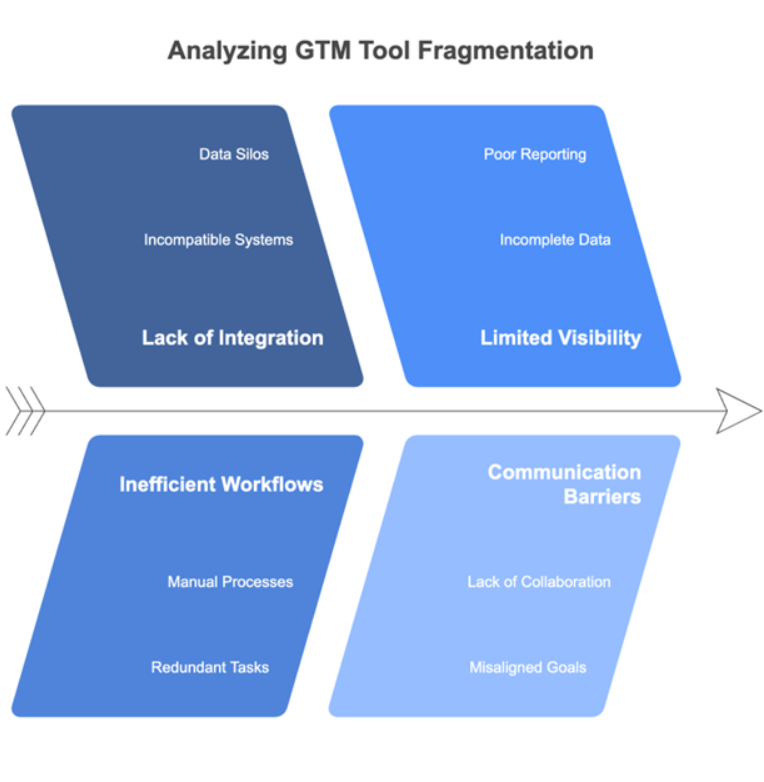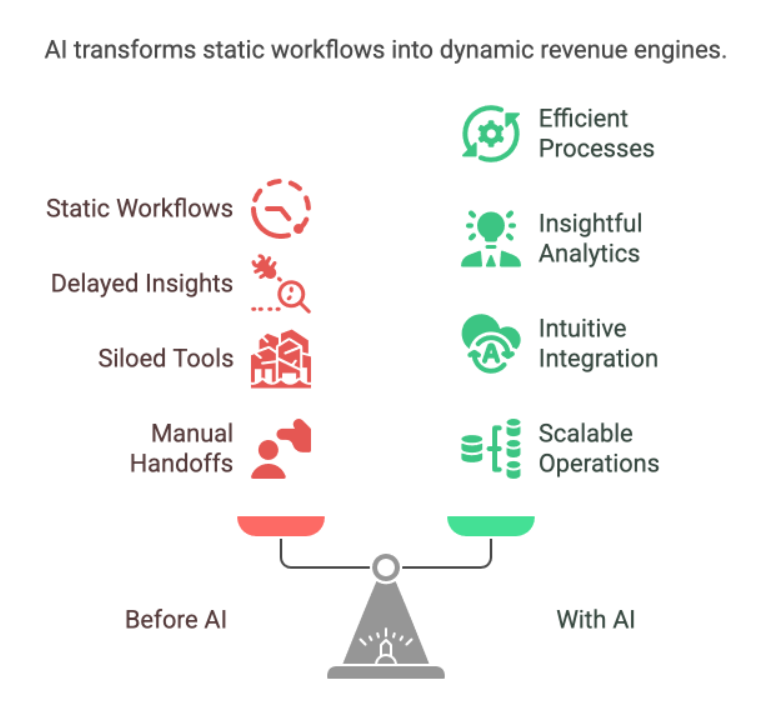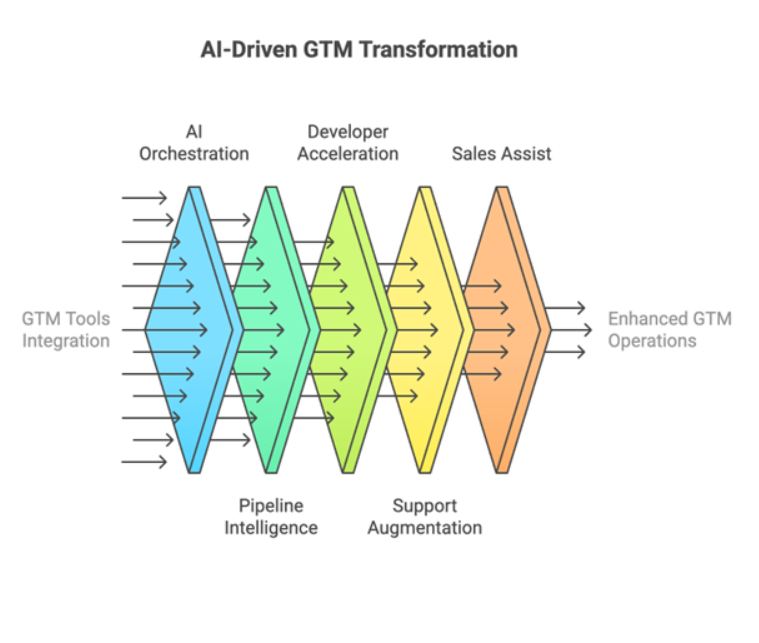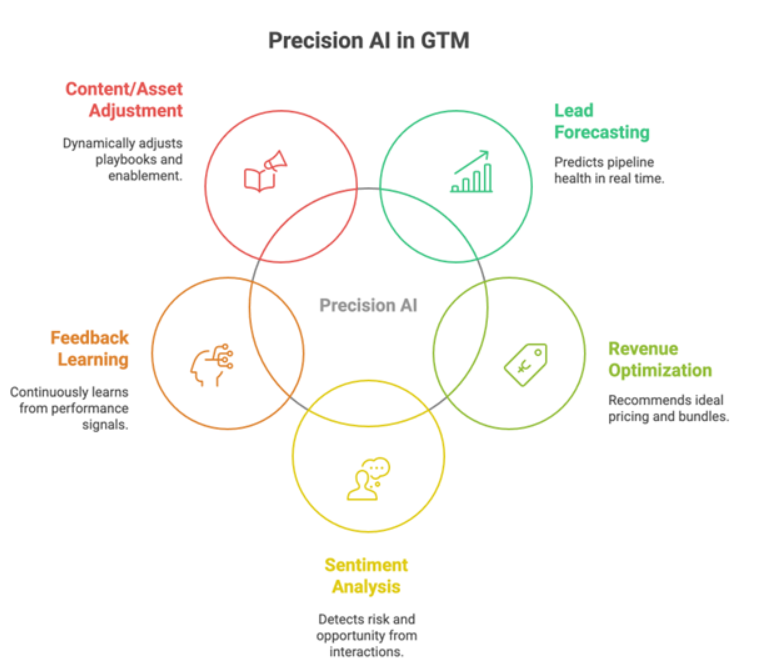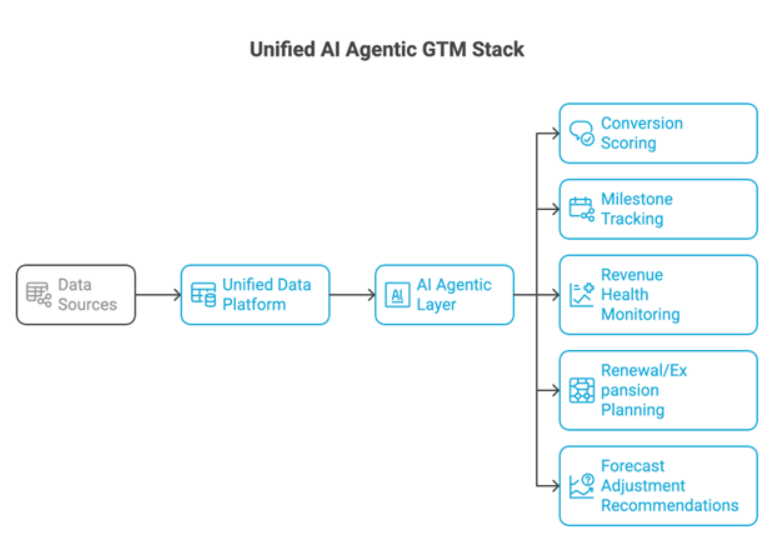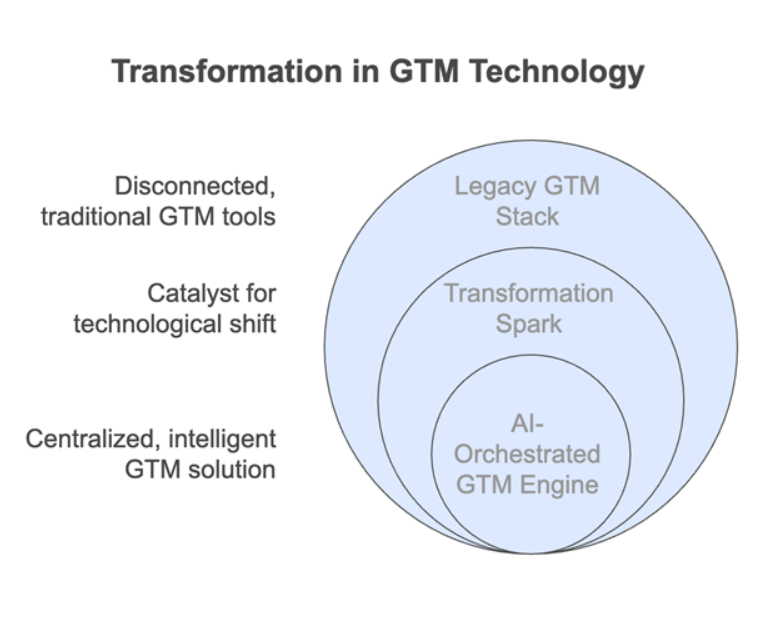
Go-to-market (GTM) systems have never been more sophisticated and fragmented. Today’s teams rely on a sprawling array of platforms such as Salesforce, CPQ, Marketo, HubSpot, MuleSoft, Clari, Gong, ZoomInfo, D&B, Workato, DocuSign, Ironclad, SpringCM, NetSuite, Outreach, Calendly and Gainsight, along with legacy tools such as Jitterbit and Mixpanel. These platforms collectively manage the customer journey from first contact to final invoice. However, while tool adoption has surged, the ecosystem they form is often disjointed, slow to adapt and heavily reliant on manual coordination.
That is beginning to change. Artificial intelligence (AI) is no longer just an enhancement to GTM operations; it is becoming the connective layer that integrates, automates and improves every stage of the Lead-to-Cash (L2C) journey. From forecasting and quote generation to call summarization and revenue optimization, AI is transforming GTM from a collection of siloed workflows into a fluid, intelligent system.
From Static Workflows to Adaptive Revenue Engines
Historically, GTM systems functioned like isolated machines, each designed to perform a specific task. Today, with AI embedded throughout, these machines are evolving into components of a larger, adaptive system. Customer relationship management (CRM) records are no longer just passive repositories; they are becoming predictive sources of insight. Sales and support tools are becoming more intuitive, guided by natural language interfaces and sentiment models that reflect real-world behavior. Repetitive tasks such as clause drafting and quote creation are being automated, compressing sales cycles and improving speed. AI systems scale with the business, adapting quickly to new markets or partner models. Generative models embedded in everyday tools now enable teams to produce summaries, redline documents and draft follow-ups in real time.
These developments do more than streamlining operations. They mark a shift toward what many now call Precision AI, defined as a model where AI doesn’t just automate but intelligently influences how revenue is generated and decisions are made.
Putting AI to Work Across the Business
One project I worked on illustrates this transformation in practice. We implemented generative AI tools across several departments to improve efficiency and outcomes.
In customer support, we deployed an AI assistant that could generate instant case summaries, suggest next-best actions and draft responses automatically. The result was a noticeable reduction in resolution time and a measurable lift in customer satisfaction.
In engineering, I helped integrate AI-powered tools that assisted developers with rewriting logic, generating test cases and reviewing code directly within their existing workflows. This improved code quality while reducing development time.
We also built internal AI agents that could pull live data from ticketing systems, documentation platforms and CRMs. By integrating this information into collaborative environments, teams were able to query and act on real-time insights using natural language, without escalating to technical teams.
On the sales side, I worked on piloting an AI solution that surfaced pipeline trends, suggested personalized follow-ups and highlighted deal risks—all integrated directly into the CRM. The objective wasn’t just to automate routine tasks but to build a more coordinated, intelligent revenue operation.
The Rise of Precision AI in GTM
Precision AI is defined by its context awareness, speed and deep integration into decision workflows. In the GTM space, it is changing the way teams forecast, price, engage and optimize.
Forecasting now draws not only on CRM data but also on behavioral signals and communication trends, enabling revenue leaders to spot risk early and adjust quotas more accurately. Pricing and packaging recommendations are becoming more dynamic and informed by historical conversions and buyer profiles. AI is also listening across channels, including calls, emails and chats, to detect churn risk and monitor customer health in real time. Sales and marketing campaigns now adjust automatically based on which messages, content and outreach methods are resonating with buyers.
These changes mean GTM teams can operate less like rigid funnels and more like dynamic systems that respond continuously to shifting customer signals and market conditions. AI becomes the layer that connects data, decisions and execution. It provides leaders the tools to anticipate and teams the ability to act faster. Moreover, it releases employees from managing process complexity so they can focus on creating real value.
Several external trends are accelerating the move toward AI-native GTM systems. Software as a service (SaaS) platforms are embedding intelligence by default, not as an afterthought. Generative AI is making personalization scalable, enabling real-time offers, emails and pricing tailored to individual buyer behavior. Robotic process automation is streamlining traditional back-office operations, such as billing, procurement and contract review. Moreover, cloud-native infrastructure, with robust application programming interfaces (APIs) and real-time data pipelines, makes it possible for AI systems to respond live to what’s happening across the GTM stack.
The foundation is already here. The companies that will lead are those that build on it fast.
We’ve reached a point where the architectural groundwork is complete. AI-native tools, automated workflows and orchestration layers are in place. The differentiator now is execution speed.
Winning organizations will be those that eliminate internal friction, embrace intelligent automation and connect real-time signals to strategic action. When AI is positioned not just as a support tool but as a guide across the GTM journey, every function benefits.
The Next Phase: Activating AI Across the Stack
In the coming months, my focus is on unlocking self-service capabilities across the business, from engineering to operations to go-to-market execution.
This means developers get AI support that accelerates code quality, test coverage and logic validation. Business users no longer need to submit tickets; they ask questions and get real-time insights and actions through AI agents. Troubleshooting becomes proactive, as AI reads telemetry, spots root causes and provides clear next steps. Compliance becomes a built-in feature, with alerts triggered immediately upon violation detection. Deployments are streamlined, with validation and rollback planning handled automatically.
This isn’t just about boosting productivity. It’s about re-architecting how work happens across teams.
My broader vision is to consolidate fragmented GTM data into a central intelligence layer using platforms such as Snowflake, Databricks or Salesforce Data Cloud. On top of this foundation, we can build unified AI agents that orchestrate lead-to-customer conversion, monitor project milestones, provide visibility into revenue health and automate renewal and upsell workflows.
Instead of bouncing between tools and systems, teams would operate inside a single intelligence layer that continuously learns, suggests improvements and drives revenue strategy in real time.
This is the future of go-to-market execution: Coordinated, AI-assisted and always learning. The shift has already begun. The only question is are you building for it?

